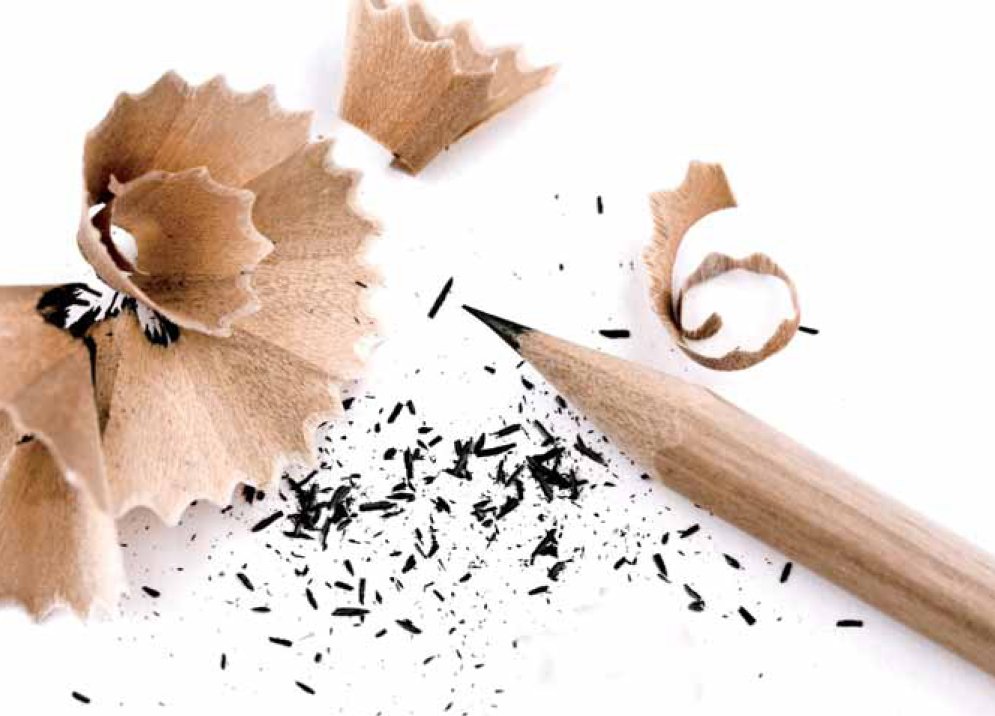As a schoolboy lacking in concentration, I found something incredibly therapeutic about sharpening a pencil. Whether it’s with an old fashioned magnesium sharpener or a razor-edged steel craft knife, there is no mistaking the peppery smell of that sharpened pencil and, for some, the irresistible urge to gnaw on the end of one. As an object made of wood it is one that has a direct immediacy with its user. You hold it, digging your nail into its plastic-painted surface, smell it, carve it into a needle sharp point, and chew it. Through its built-in obsolescence it goes from being an object of satisfying proportions to a redundant little stump. For this once young schoolboy it also evokes memories of a material and product that empowered me to express my early designs for intergalactic space ships.
One of the reasons that the pencil provokes such strong associations is due to its aromatic smell, which comes from the use of red cedar, a timber with a reddish-brown heartwood and a smooth, fine grain. Since the first mass-produced pencils were developed in Germany in the seventeenth century they have continued to evolve into a product of high mass production. One of the curious facts about pencils is that 75 per cent of pencils sold in the US are yellow, which apparently is due to an old standard established in the nineteenth century, where yellow was used as a symbol of prestige.
Image: Cedar pencil

•Medium density: 380 kg/m3 (23 lbs/ft3)
•Straight, fine, even grain
•Aromatic scent
•Low stiffness
•Not suited to steam bending
Sources
Mainly Eastern USA and Canada, Uganda, Kenya and Tanzania.
Cost
The most common type of cedar is the western red variety. It is moderately priced and can easily be found on the market.
Sustainability issues
According to the IUCN (International Union for Conservation of Nature) red cedar is one of the least threatened trees.
Production
Pencil cedar can be worked easily with both hand and machine tools with little blunting effect on blades. It will tend to split if nailed and has poor steam-bending properties.
Typical applications
The aroma of cedar has been put to use for products such as cigar boxes, wardrobes and chests – to ward away moths – coffins and furniture veneers. Waste shavings from production are often distilled for use in essential oils.
| + | – |
|
–Easy to work –Aromatic scent –Straight, even grain –Sustainable |
–Prone to splitting –Poor steam bending |
